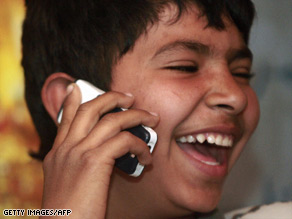
Hardware used to spot gamma ray bursts could soon be helping direct troops on a battlefield.
Defence firm Qinetiq has brought the technology down to Earth to make a monitoring system that may be able to track thousands of targets.
The futuristic system manages the feat without using lenses to gather light from the scene it is watching.
Instead it employs a sensor array, a special "mask" and image processing software to picture a scene.
High guard
Astronomers had been attracted to such devices because they coped much better with harsh conditions when a spacecraft is launched and in space, said Dr Chris Slinger, Qinetiq's principal investigator on the system.
"It's hard using lenses and mirrors up there," he said.
Instead of lenses the imaging system uses an array of microscopic sensors in front of which is a specially made "mask" randomly punctured with holes in a particular pattern.
Light from the scene over which the detector is passing hits the mask and casts a distinctive shadow on the array behind it.
"If you design your coding pattern well it's possible to take this mishmash pattern and use digital signal processing to decode the pattern to pull out an image of the scene," said Dr Slinger.
 This coded aperture helps Swift spot gamma ray bursts |
Nasa used such an approach, called coded aperture imaging, for the Swift satellite that was sent aloft to spot gamma ray sources.
By doing away with lenses and mirrors to focus light it is possible to produce an imaging system that is very sensitive but also light and durable.
Because the image the device is picking up is spread across many thousands of sensors, damage to one in the array does not significantly degrade the entire image.
Shifting the systems focus of interest was much easier than with bulky lens-based equipment because it was so light, said Dr Slinger.
The system should also have a "super resolution" mode that can dial into a scene to produce very detailed pictures of one location in its field of view.
Qinetiq is developing the imaging system for the US Defense Advanced Research Projects Agency (Darpa) as part of a project known as Lacoste - Large Area Coverage Optical Search While Track and Engage.
The Lacoste project aims to produce an imaging system that will fly on a drone or airship to keep an eye on a battlefield or a huge swathe of a city.
Dr Slinger said Darpa wanted the system to be able to keep track of thousands of vehicles for months at a time.
Hardware with these abilities would be helpful for peace-keeping forces who want to wind images back from an incident, such as a car bomb exploding, to gather useful intelligence about where the vehicle began its journey.
BY-BBC NEWS












